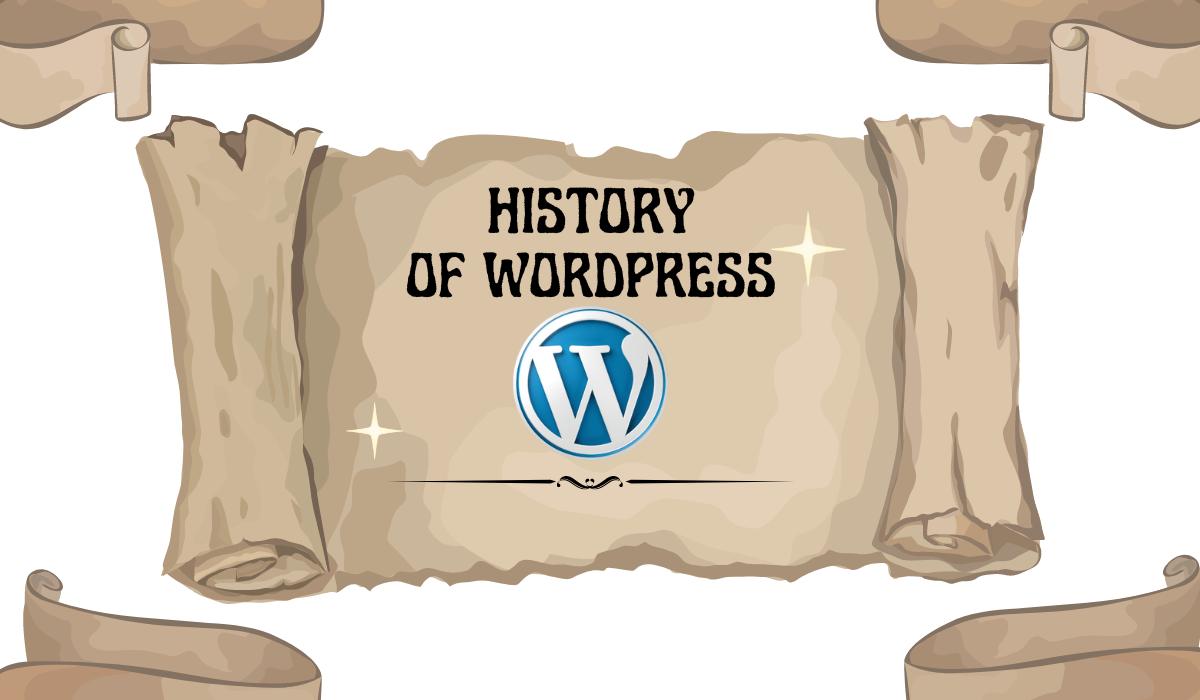Would you like to learn more about WordPress’s history?
If you want to start a WordPress blog or website today, then you have to know that WordPress is a popular website builder that powers more than 43% of all websites on the internet. Let’s see the humble beginnings of the world’s most popular content management system.
Beginning of WordPress
In 2003 when two visionary developers, Matt Mullenweg and Mike Little, joined forces to create a new blogging platform. Inspired by the desire to democratize publishing and make blogging accessible to everyone, they set out to develop a simple yet powerful tool that would revolutionize the way people share their ideas and stories online.
From B2/Cafelog to WordPress
In May 2003, Matt and Mike released the first version of their blogging platform, which they named WordPress. It was built on the foundation of an existing platform called B2/Cafelog, WordPress offered a user-friendly interface, customizable templates, and robust functionality that set it apart from its predecessors.
WordPress gained growing community of users and developers, This growth of wordpress made it clear that this was more than just a blogging platform it was a fully functional content management system (CMS), which is capable of powering websites of all shapes and sizes.
Rise of Open Source and the WordPress Community
The foundation of WordPress’s success is its dedication to open-source principles. In the beginning, WordPress was created collaboratively from the start by a large global community of contributors who freely shared their knowledge, skills, and code to make the platform better for everybody.
WordPress has evolved from a simple blogging tool into a versatile content management system (CMS) through the power of the open-source community. This growth of WordPress would not have been possible without the dedication and passion of the WordPress community, whose contributions continue to drive innovation and bring the platform forward.
The Evolution of WordPress
Over the years, WordPress has undergone numerous iterations and updates, each one bringing new features, improvements, and innovations to the platform. Here are just a few key milestones in WordPress’s evolution:
WordPress 1.0 (2004)
The first official release of WordPress, featuring basic blogging functionality and template customization options.
WordPress 2.0 (2005)
Introduces a revamped user interface, plugin architecture, and support for pages, themes, and static pages.
WordPress 3.0 (2010)
Introduces custom post types, custom taxonomies, and the powerful multisite feature, allowing users to create multiple websites from a single WordPress installation.
WordPress 5.0 (2018)
Introduces the revolutionary Gutenberg editor, a block-based editing experience that transforms the way users create and manage content in WordPress
Future of WordPress
As we look to the future, The future for WordPress is brighter than ever. With a passionate community of developers, designers, and users promoting its growth. WordPress continues to evolve and adapt to meet the changing needs for digital landscape.
Working for new features and improvements to improve its accessibility, security, and performance. WordPress remains committed to its mission of empowering individuals and organizations to create beautiful, functional, and accessible websites.
Conclusion
From start to current status of wordpress, where it is the world’s leading content management system, WordPress is an example of the power of innovation, collaboration, and community.
while looking back on the journey of the wordpress from start to today. One thing is clear, the future of WordPress is bright, and the possibilities are endless. So in the next chapter of WordPress’s story may it be filled with even more innovation, creativity, and success than ever before!


